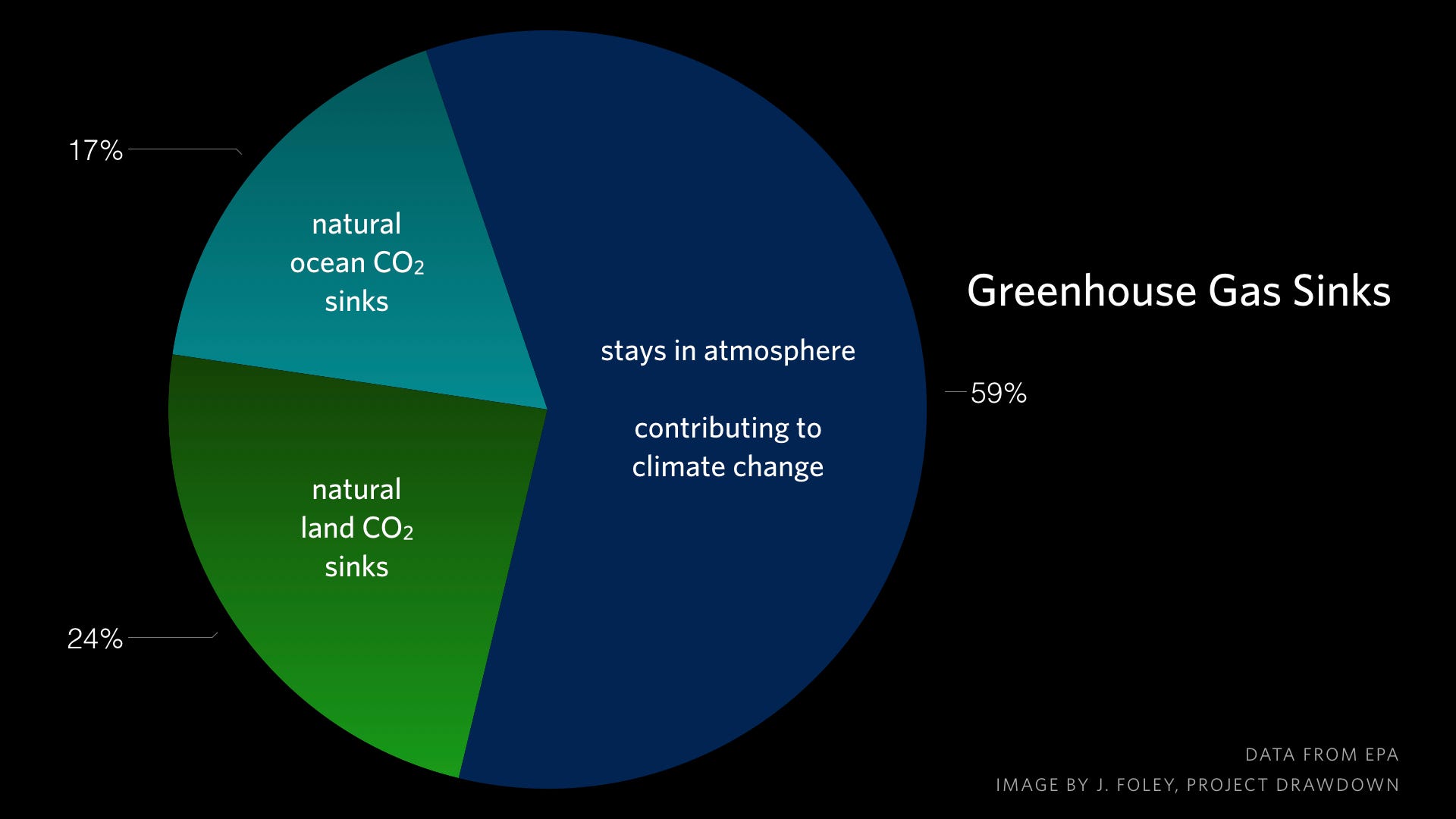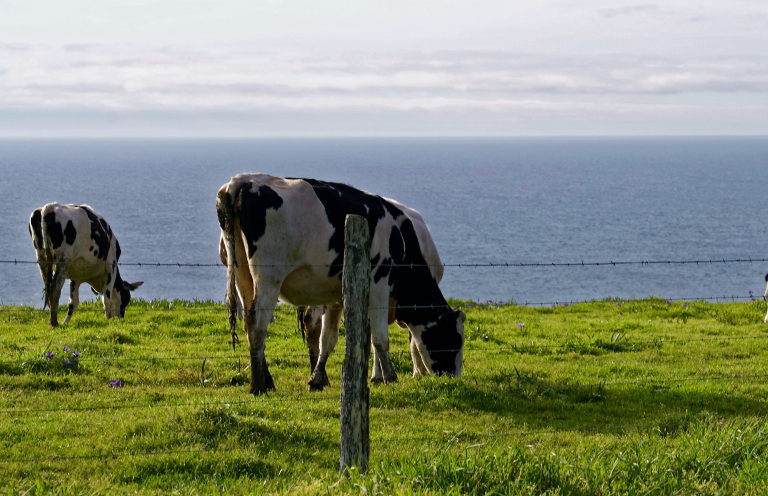Could changing our land use and agricultural practices make a dent in addressing climate change? Yes, says Project Drawdown and a new report from the IPCC.
The Intergovernmental Panel on Climate Change (IPCC) released a new report that highlights the importance of land use and agriculture in climate change.
Good! It’s a crucial area for us to focus on, and it’s often neglected.
I’ve been working on this topic, on and off, since the 1990s, and have been bewildered why it doesn’t get more attention. For some reason, when we think of greenhouse gas emissions, we envision factories, cars, and smokestacks — not farm fields, plantations, and cattle ranches. But, it turns out, land use and agriculture are among the biggest contributors to climate change — and can be among the biggest climate solutions.
So it’s great to see more attention paid to land use and agriculture, and its central role in addressing the climate crisis. At Project Drawdown, we have stressed this point since the beginning, and we are happy to see others talk about it too.
So, why does land use and agriculture matter to climate change? Isn’t it all caused by CO2 released by burning fossil fuels?
No! It turns out that CO2 released from burning fossil fuels — whether in electricity, transportation, buildings, or industry — contributes roughly 62% of the current warming. The remaining 38% comes from other sources — including roughly 24% from land use and agriculture.

Greenhouse gases. It’s not just CO2.

Greenhouse gas emissions by sector. Please note that this figure is for the world as a whole, not an individual country. Some countries, like the United States, experience more emissions from electricity than from land use & agriculture. Others, like Brazil, see the opposite. Your location matters.
Breaking this down into economic sectors, we find that land use & agriculture basically tie electricity generation (at 24% and 25%, respectively) as the largest contributors to climate change today.
Imagine that: Electricity generation and land use & agriculture are basically equal in terms of their global impact on climate change, yet addressing emissions from electricity gets far more attention and funding.
Maybe we need to have a more balanced perspective?
What makes land use & agriculture such big emitters of greenhouse gases?
The largest single source of greenhouse gases from land use & agriculture is tropical deforestation. Like burning fossil fuels, burning forests (which are also made out of carbon) releases enormous amounts of CO2 to the atmosphere, contributing to climate change. Today, most of the world’s deforestation is for new agricultural production (soybean fields to grow animal feed, oil palm plantations, and cattle pastures), as well as for timber harvesting and mining.
Biological methane (CH4) emissions are the second largest source of greenhouse gases from land use & agriculture. Most of these emissions come from cattle and sheep (who burp methane), manure piles, rice fields, and biomass burning.
The third largest source of greenhouse gases in this sector stems from nitrous oxide (N2O). Nitrous oxide is mainly released by overusing fertilizers and manure in croplands.
Other things linked to land and food contribute to climate change too, but are smaller. For example, the fossil fuels used in farm machinery, making agricultural chemicals, or transporting food are important, but are smaller emitters than these three primary sources.
Because land use and agricultural practices are such big emitters of greenhouse gases, they need to be a big part of our solutions to climate change. And the most important things we can do to reduce emissions from land use & agriculture include:
- Conserving and restoring tropical forests. The biggest source of greenhouse gases from this sector comes from clearing tropical forests. More attention is needed to conserve and restore them, especially in Brazil and Indonesia. Brazil deserves special attention, as dramatic changes in their government could fuel a resurgence in deforestation.
- New methods of animal agriculture. Animal agriculture is a major source of methane — especially from cattle, sheep, and manure piles. New ways of raising cattle and sheep — including new feed additives (such as seaweeds that appear to lower methane emissions) and new grazing techniques (more on this below) — can help a great deal. Better manure management is needed as well.
- New methods of rice cultivation. Rice fields are also a major source of methane emissions, and some techniques may be able to reduce their emissions. More research in genetic and agronomic improvements to rice cultivation is needed.
- More prudent use of nitrogen fertilizers and manure in farming. We can reduce nitrous oxide (N2O) emissions from agriculture by improving the use of chemical fertilizers and manure in the world’s croplands. Large areas of the United States, China, and India release nitrous oxide because they are applying far too much fertilizer. Cutting back on fertilizer use can maintain the same crop yields while reducing greenhouse gas emissions and the runoff of nitrogen and phosphorus into local waterways.
We can also implement solutions in the broader food system:
- Reducing food waste. It is estimated that about 30 percent of the world’s food is lost after harvest, whether in transport, warehouses, markets, homes, schools, businesses, or restaurants. This means that roughly 30% of the land, water, chemicals, and greenhouse gas emissions associated with food production isn’t necessary. If we cut food waste, we may be able to cut the resource demands and environmental impacts of agriculture. What’s important here is to target the most resource-intensive and polluting food items, especially red meat and dairy products.
- Eating more plant-rich diets. We can also reduce the impacts of agriculture on the environment through our dietary choices, especially by reducing the amount of red meat and dairy products we eat. While it is theoretically possible (see more below) to raise cattle and sheep with fewer greenhouse gas emissions — and maybe in ways that sequester more greenhouse gases than they emit — the vast majority of the world’s animal agriculture does not yet do this. So, as a first step, cutting our consumption of these products can help address climate change.
At Project Drawdown we have identified many solutions to climate change. Of the top 20 solutions discussed in our original 2017 book, Drawdown, eight of them come from land, food, and agriculture.
It is clear that reducing greenhouse gas emissions from land use and agriculture needs to play a central role in addressing climate change. After all, roughly a quarter of our emissions comes from this sector.
But it turns that we can go beyond this, by not only reducing the greenhouse gas sources from agriculture and land use: We can also create or enhance “sinks” of carbon in forests, grasslands, and croplands.
It turns out that nature does a lot of this already. After all, nearly 55% of our carbon dioxide emissions are quickly absorbed by Earth’s oceans and land-based ecosystems, leaving only 45% of our CO2 emissions in the atmosphere long term, contributing to climate change.
If nature can absorb over half of our CO2 emissions, without any effort on our part, perhaps we can shift land use practices so that they augment nature’s carbon sinks? If so, this goes beyond reducing the 24% of global greenhouse gas emissions in the land use & agriculture sector; it could potentially remove more.

Land-based ecosystems and oceans remove about 55% of the CO2 emitted to the atmosphere each year. That translates to removing about 41% of all greenhouse gas emissions.
How can we create carbon sinks through land use and agriculture? Here are some ways:
- Restoring forests and planting trees. This one is pretty simple. Burning and cutting down trees releases CO2; replanting and restoring them absorbs CO2. We can even restore forests to their natural ranges, some not seen in millennia, and increase the forest cover of the planet. (But we must be careful to not indiscriminately plant trees where they could be ecologically disruptive, especially in grasslands and semi-arid ecosystems.)
- Managing grazing lands so they accumulate soil carbon. As mentioned before, it may be possible to implement grazing practices that stimulate grass productivity and root growth, so that pastures accumulate so much soil organic matter they can offset the emissions of grazing animals. It appears that this technique can work, especially when compost is added to the landscape, but more research is needed to see how this can be scaled up and sustained over time.
- Using “regenerative” farming techniques so croplands rebuild soil. Like pastures, we can shift our farming practices on croplands so that they start accumulating significant amounts of organic matter, rebuilding the soil, and sequestering carbon out of the atmosphere. Such practices including no-till cultivation (which, unfortunately, is often linked to heavy herbicide application), composting, and practices from the organic farming and permaculture pantheon.
Here’s the big picture: Land use & agricultural practices contribute about a quarter of the world’s greenhouse gas emissions and they can be changed to introduce new carbon sinks.
This means that — in theory — improving land use and our food system can dramatically reduce 24% of the world’s greenhouse gas emissions, and potentially remove carbon dioxide beyond that.
This will require some substantial changes in policy, business practice, capital, and behavior, of course, but most of these would generate incredible economic and social co-benefits, and would be very smart things to do.
Without a doubt, this is an enormous opportunity to address climate change. But it does not replace the work we need to do in other sectors — especially electricity, industry, transportation, and buildings. Massive efforts to phase out emissions in these areas are needed too. Looking across these sectors, I think the top priorities for climate action include:
- Replace carbon-based electricity with renewables as quickly as possible, and shift as many transportation and building systems to electricity as soon as we can.
- Reimagine the production and use of greenhouse-gas intensive materials, including concrete, steel, and refrigerants.
- Reinvent our agricultural practices and food system so that they increase food security and reduce greenhouse gas emissions.
- Restore natural ecosystems and practice regenerative agriculture, so that we create new carbon sinks — as well as healthy landscapes, clean waterways, and more wildlife habitats.
There is no single answer to addressing climate change, of course. No silver bullets exist. But silver buckshot does.
If we look at the whole board, we can see numerous opportunities to work together — across economic sectors, geographic locations, and local-to-national scales — to reduce emissions, create carbon sinks, restore healthy ecosystems, create jobs and local economic benefits, improve human wellbeing, and stop global warming.
It can be done. The only real question is: Will we?
To learn more about the role of land use and agriculture on climate change, read the new IPCC report. And also check out our land-based climate solutions at Project Drawdown and following us at @ProjectDrawdown.
Teaser photo credit: California cows, Marin County. Photograph by Jonathan Foley © 2017.





